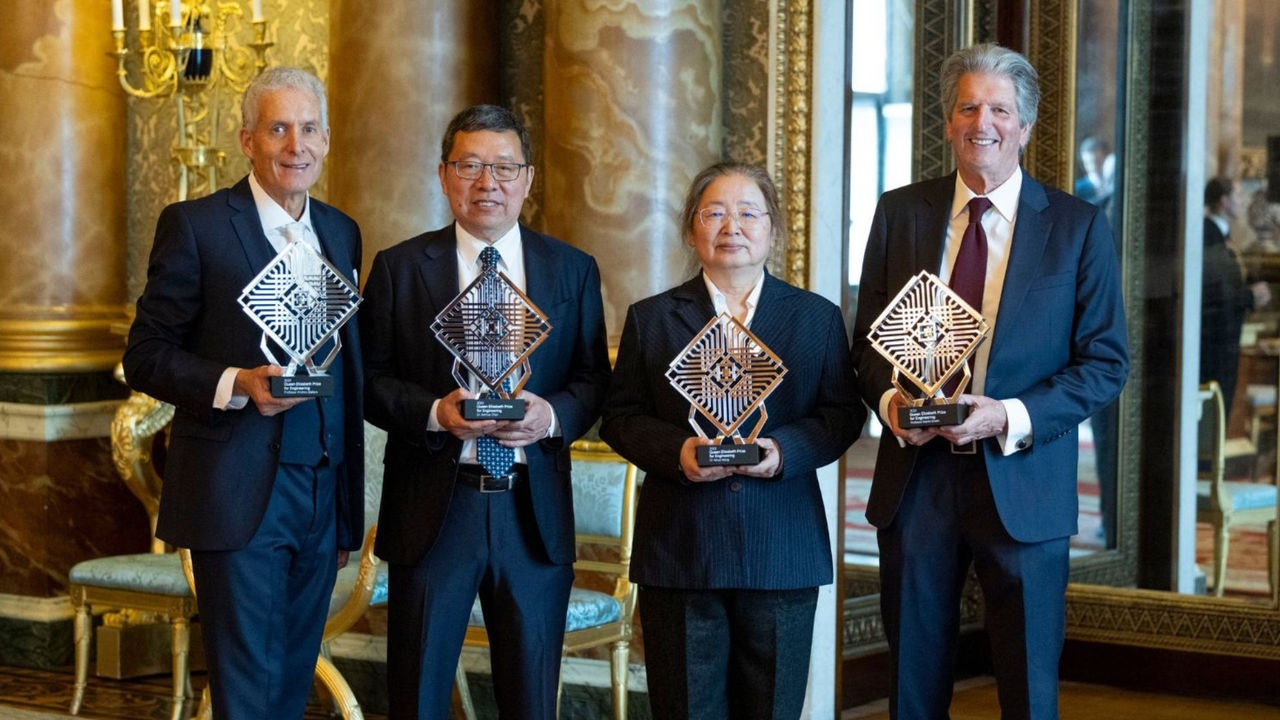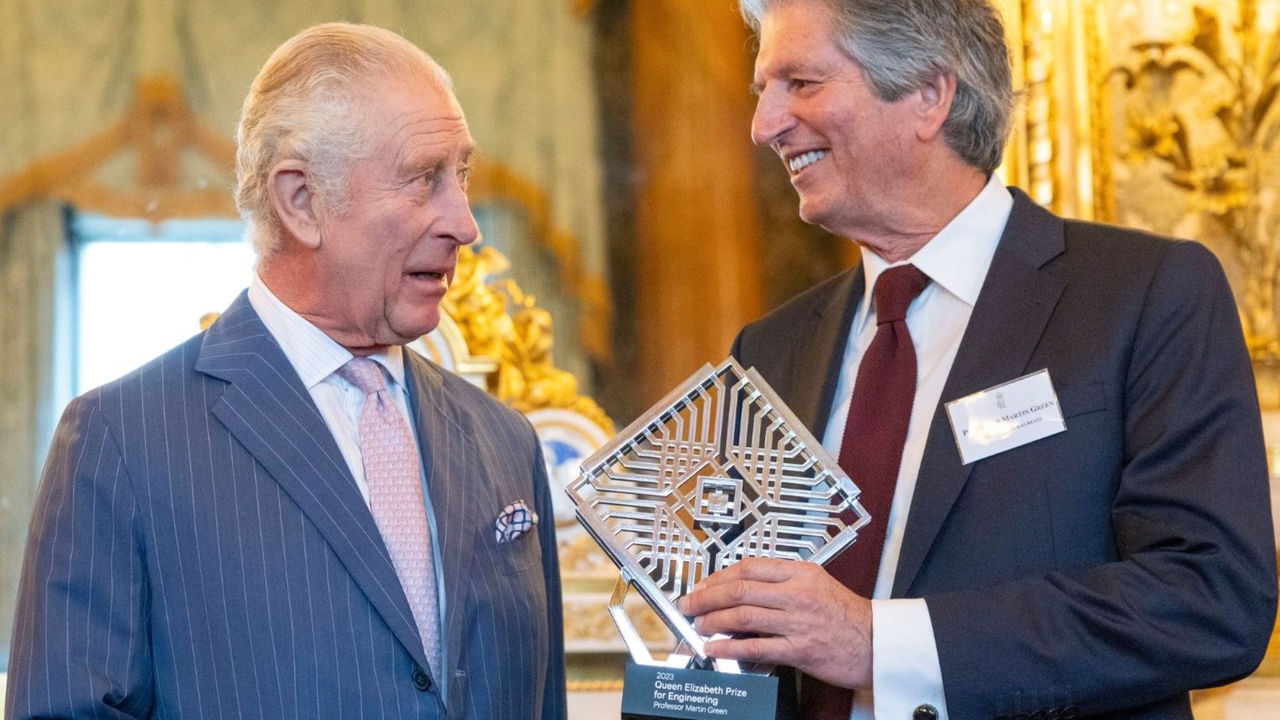Australian engineers awarded the world's top prize for solar cell technology
A team of Australian engineers has been awarded the world's top prize for engineering. The Queen Elizabeth Prize for Engineering recognises transformational feats of engineering which benefit humanity around the world.
His Majesty King Charles presented Professor Martin Green of the University of New South Wales, Professor Andrew Blakers of Australia's National University, and Dr Aihua Wang and Dr Jianhua Zhao with the prize for their invention and work in the development of Passivated Emitter and Rear Cell (PERC) solar photovoltaic technology.
Professor Green and his team's work over the last 40 years has transformed photovoltaic technology and dramatically reduced costs, with solar now the cheapest source of electricity in most countries. Today, the PERC is the cheapest way to generate electricity using solar cells and is used in over 90% of solar panels around the world.
Professor Green said: ‘To receive this prestigious award from His Majesty King Charles is a proud moment for me, but I hope also for my UNSW colleagues and students. The QEPrize is famously committed to recognising engineering that delivers transformational change in society and I believe a transformational shift towards solar, and wind generated power is inevitable. It is a critical trajectory that we’re on and it is special to be recognised for our part in that, today.’
The PERC has brought down the cost of solar panels by 80% over the past decade. Solar power is now the cheapest source of electricity in many regions around the world.
When he announced the award’s recipients earlier this year, Lord Browne of Madingley, Chair of the QEPrize Foundation, said: ‘The QEPrize celebrates the engineers who time and time again solve the impossible and transform our world for the better. I believe that everything we do has to be oriented around the global energy transition so we can achieve net zero, for the planet and the people that live on it. PERC solar cell technology has been and will continue to be integral to this journey.’

Government funding and support
Australian Government funding for alternative energy sources during the oil shortages of the 1970s set Professor Green on a pioneering path to create a more efficient type of solar cell.
Most recently, Professor Green received funding from the Australian Renewable Energy Agency (ARENA) to help establish the Australian Centre of Advanced Photovaltaics.
‘Having that funding was really important to our success, and probably to the world now having cheap solar cells,’ he said.
‘The best thing about the invention is that it provides a viable alternative to fossil fuels for generating large amounts of energy so that now the cheapest way of generating electricity is using these solar cells.’
PERC technology is the most commercially viable silicon solar cell technology used in solar panels and large-scale electricity production. It accounts for almost 90% of the global solar cell market.
Professor Blakers said: ‘Solar energy is enormously abundant nearly everywhere. Silicon solar cells allow clean and affordable electrification of energy-poor rural areas across Asia, Africa and the Americas.’
As the global appetite for clean energy grows, this Australian-invented viable alternative to fossil fuels has never been more important.

Australia’s focus on net zero
Australia is the number one place in the world for installed solar capacity per capita. We offer significant potential for renewable energy and broader investment in technology that helps establish a decarbonised economy, thanks to our:
- abundant natural resources: sunshine, wind and the critical minerals needed for clean energy technologies from batteries to wind turbines
- government net zero commitment backed by supportive policies and funding
- world-leading innovation ecosystem.
Watch our interview with Professor Martin Green, the inventor of the PERC solar cell.